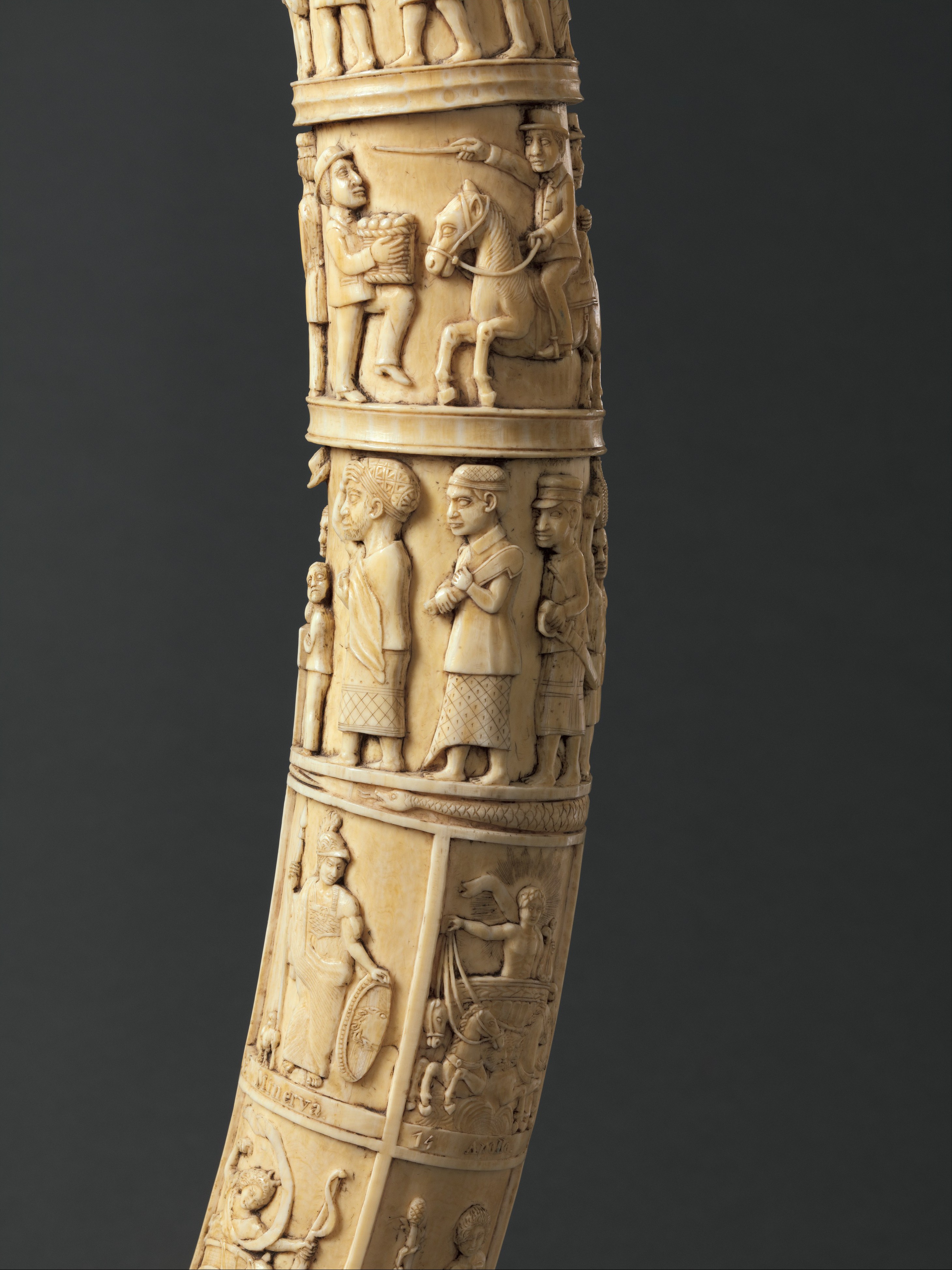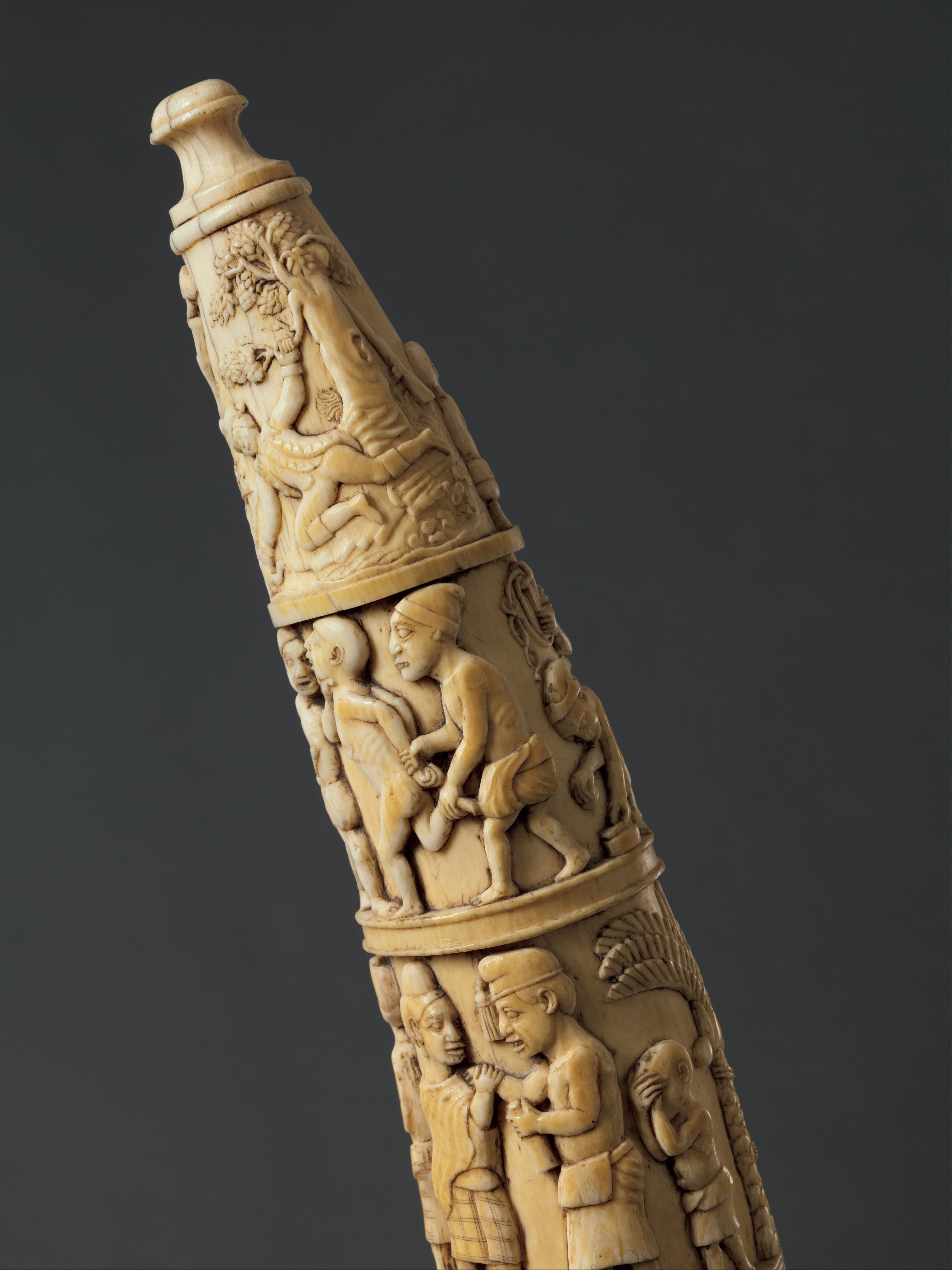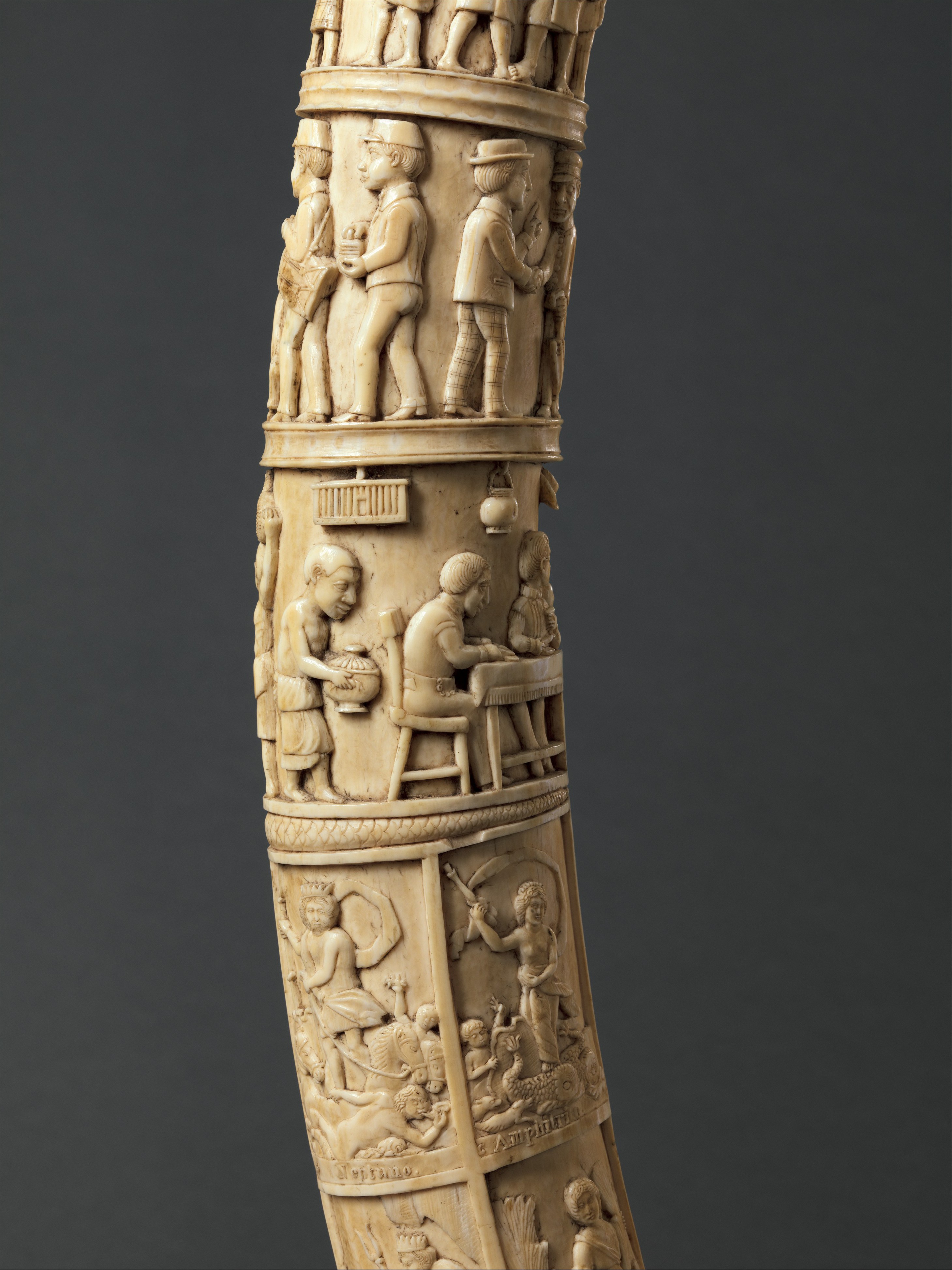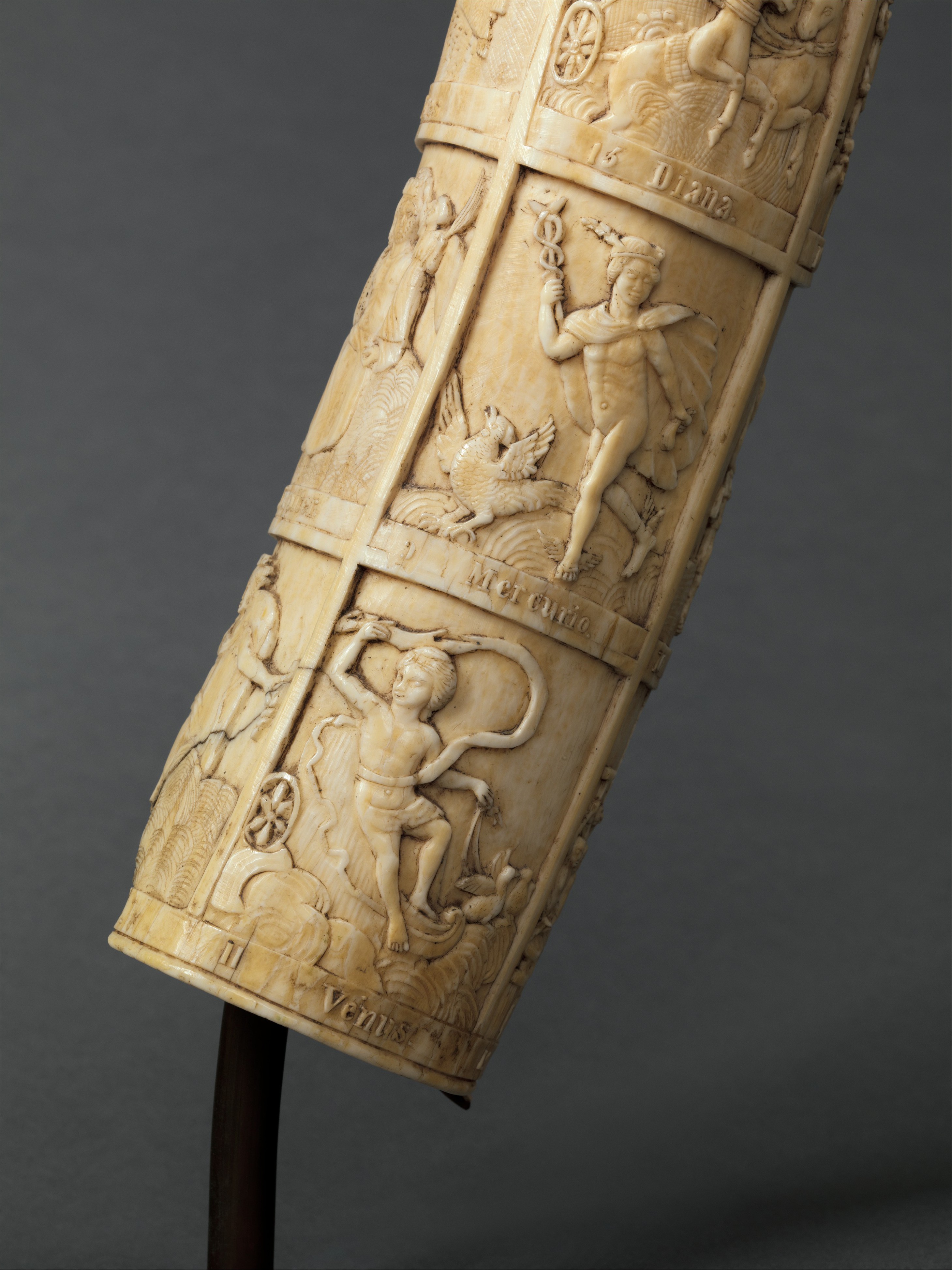Tusk with Figurative Relief
Not on view
The scenes carved on this tusk correspond to recurrent imagery of nineteenth-century Western illustrations, including depictions of Roman gods in the bottom four registers of the tusk. Coupled with images of enslavement, colonial splendor, and trade, this diverse imagery has been interpreted as a narrative of progress. Slavery is portrayed as a brutal and uncivilized historical practice, eliminated through colonial development. On the second register from the top, an African man is threatened with a sword, choked, and detained while two women look on with distress at the capture of their loved one. Juxtaposed against the sale of textiles in the third register, slavery is positioned as a bi-product of African greed. As an object produced for export, it was carved with a European clientele in mind. The narratives reinforce the Belgian colonial mission as a civilizing force. Despite these representations, Belgian colonialism is remembered today for its extreme brutality, captured in other tusks (TR114.1.2022) from the same period and in the photographs of English missionary Alice Seeley Harris.
Due to rights restrictions, this image cannot be enlarged, viewed at full screen, or downloaded.
This artwork is meant to be viewed from right to left. Scroll left to view more.











